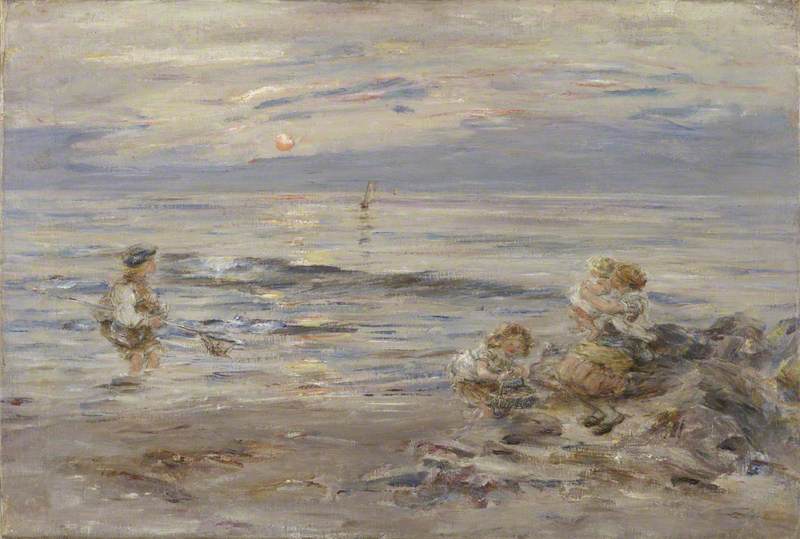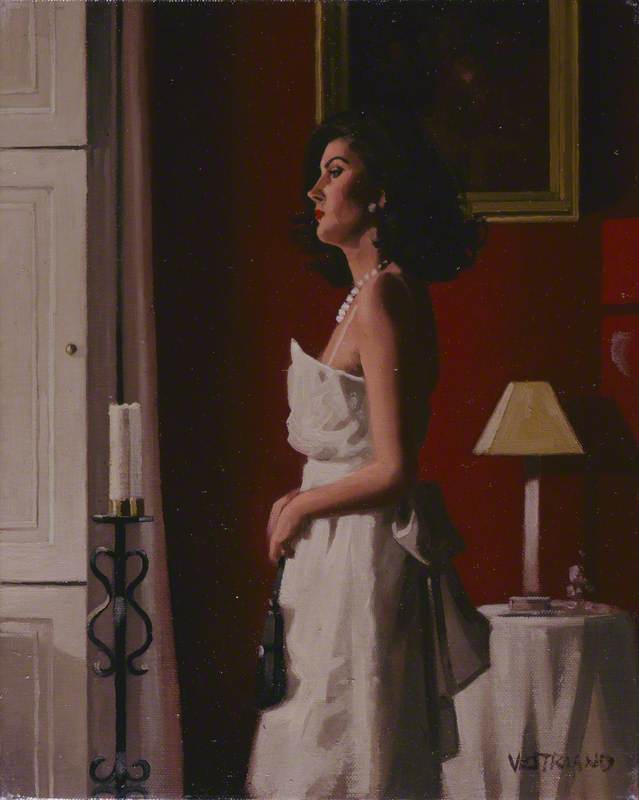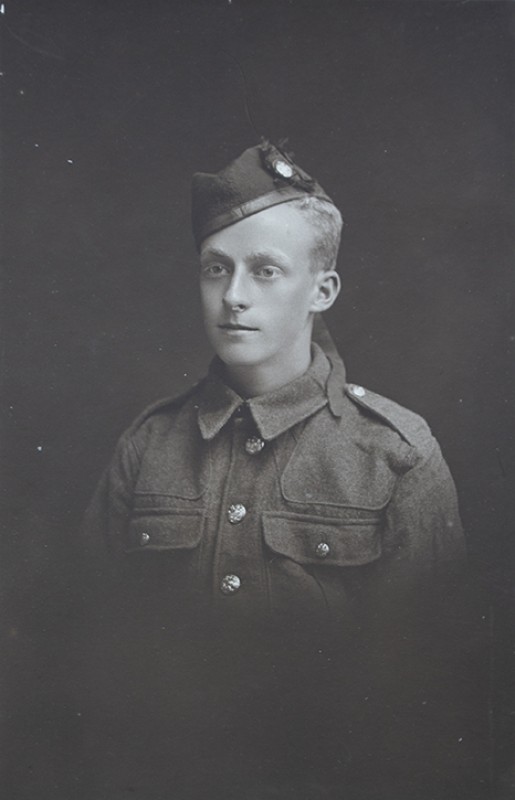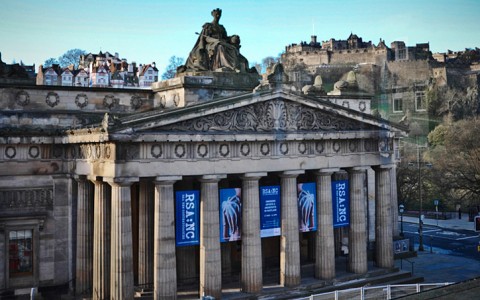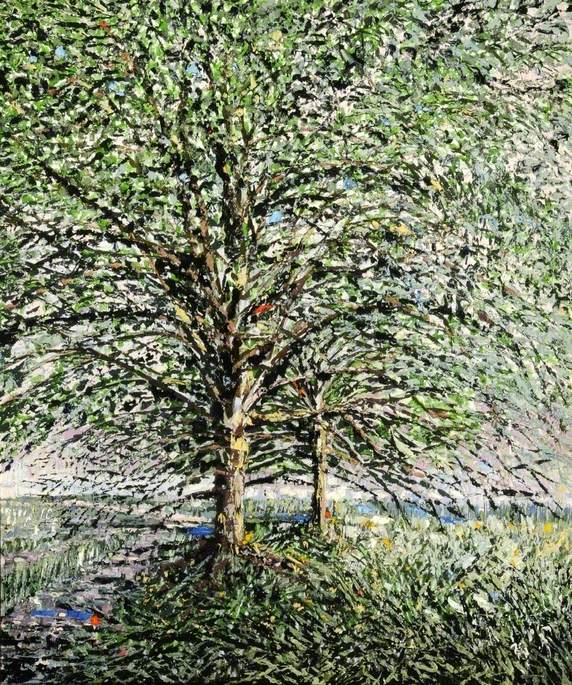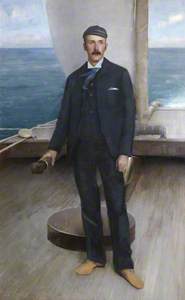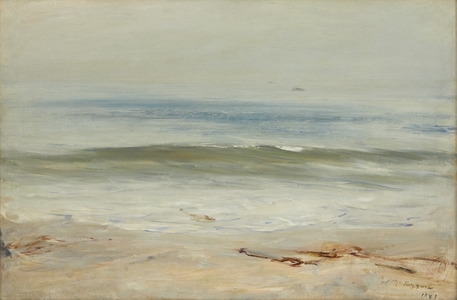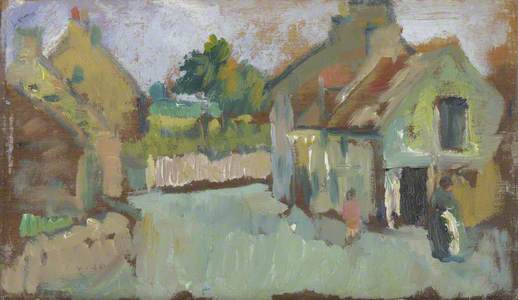One hundred years ago, plans to build memorials to remember the fallen in the Great War were being made across the country. The industrial town of Kirkcaldy on the Fife coast was no different in that respect. What made it unusual is that Kirkcaldy's War Memorial was also built as part of a splendid new museum and art gallery, which opened in 1925.
From those beginnings, Kirkcaldy's Scottish art collection has grown to become one of the best held anywhere. The jewels in the crown are the oil paintings of the Scottish Colourist S. J. Peploe (1871–1935) and the landscapes and seascapes by the Victorian artist William McTaggart (1835–1910).
Kirkcaldy's most famous industry was, and still is, linoleum. The only remaining linoleum factory in the UK is located in the town. Kirkcaldy is synonymous with floorcoverings like Northampton with shoes and Clydebank with shipbuilding. Back in the early 1920s, the chairman of the largest linoleum company was John Nairn.
He funded the building of the War Memorial and Museum for two reasons. His son Ian Couper Nairn was killed tragically towards the end of the Great War. Secondly, Nairn had a great love of art and also donated the first paintings to the town, two stunning watercolours by Arthur Melville.
A prominent building called Balsusney House was demolished in the early 1920s to clear space for the War Memorial and Museum. This eighteenth-century house was for a time a railway station hotel, as can be seen in a local history painting from around 1850 which has a very early depiction of a railway train.
In the summer of 1925, the War Memorial and Museum & Art Gallery was completed. Huge crowds attended the opening events. Nearly 1,000 names were engraved on plaques on the War Memorial. A daughter of John Nairn, Gertrude Wemyss Honeyman, was presented with a silver salver, which is now in the Museum's collection, and flowers at the ceremonies.
The Museum stood surrounded, and dwarfed, by huge linoleum factories. Ironically these were some of the works of Barry, Ostlere and Shepherd, the great rivals of Nairn's company whose factories were in the other end of the town. Three years later the Museum was extended through more funds from John Nairn, to include a library and more first floor galleries.
#otd 95 years ago, Kirkcaldy War Memorial was unveiled https://t.co/87ga75KKmW #armedforcesday #wewillremember #lestweforget pic.twitter.com/m1ch4F5ahK
— Kirkcaldy Galleries (@KYGalleries) June 27, 2020
The first Curator was Thomas Corsan Morton who was also an accomplished painter. He was a member of the group of artists known as the Glasgow Boys and his connections helped the Gallery in its infancy. Exhibitions of paintings on loan included works by Van Gogh and Monet.
Following John Nairn, it was another Kirkcaldy industrialist and collector, John Waldegrave Blyth, who shaped the collection. Blyth ran a linen weaving factory in the town and he was involved with the Gallery from the start, when he became the Convener of the Art Gallery committee in 1925. It was his daughter Cora who presented Nairn's daughter with the bouquet of roses at the opening.
Blyth built up his own art collection which he displayed in his office at the factory, in his home and increasingly on show in the new Gallery. He bought his first major painting, William McTaggart's Away to the West, in 1910 and had to sell his car to fund this purchase.
He went on to develop a passion for McTaggart paintings. Many were set on the west coast of Scotland, where McTaggart had been born, and featured children or had dramatic scenes. Other works were calmer and more contemplative, like The Wave, said to be Blyth's favourite painting.
Blyth's other great passion was the works of S. J. Peploe. These ranged from landscapes and seascapes, again often set on the west coast, such as Ben More from Iona, to many still lifes for which Peploe is probably best known.
For nearly half a century John Blyth lent many paintings for display and continued to be the Convener of the Art Gallery Committee. He promoted the Gallery, calling it 'The Tate Gallery of Scotland' in lectures. Michael Portillo, the former MP and TV presenter, is the grandson of John Blyth and remembers visiting Kirkcaldy with his mother Cora and seeing the artworks in Blyth's home and in the Gallery.
Following Blyth's death in 1962 a large part of his collection was sold and Kirkcaldy Town Council was able to purchase 116 of the works thanks to the Local Museums Purchase Fund and the National Art Collections Fund (Eugene Cremetti Fund). The majority were McTaggarts and Peploes and other Scottish works but also included were paintings by artists such as Lowry and Sickert.
The Blyth Collection purchase is the biggest single reason Kirkcaldy has such a significant group of artworks: the largest number of oils (38) by S. J. Peploe held by any gallery and the largest number of McTaggart works after the National Galleries of Scotland.
Since the 1960s, many more works have been acquired, building on the strengths of the collection but also branching into new directions. The Friends of Kirkcaldy Galleries have raised over £135,000 since 1991 to conserve works and assist new purchases. One of the latter is a view of Ceres in Fife by George Leslie Hunter.
In 1997 Kirkcaldy was the first public gallery in the country to acquire a painting by the hugely successful Fife-born artist Jack Vettriano. This was appropriate, as Vettriano had taken inspiration when starting on his career from the 'Fife Art' amateur exhibition held annually in the Gallery.
A very different contemporary work is Dad, by another Fife-born artist David Mach. Made out of coat hangers it depicts the artist's father, who worked as a coal miner in one of the other great industries of Fife. Dad is kept at the new Fife Collections Centre in Glenrothes which since 2017 houses some of the art collection when in storage.
The building in Kirkcaldy underwent major refurbishments in 1996 and 2013 and is now known as Kirkcaldy Galleries. A range of temporary exhibitions and selections from the permanent collection can be seen. The collection, which is now managed by Fife Cultural Trust on behalf of Fife Council, continues to grow and develop, building on the foundations laid a century ago.
Gavin Grant, Kirkaldy Galleries







